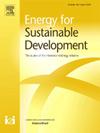An equity-based approach for addressing inequality in electric vehicle charging infrastructure: Leaving no one behind in transport electrification
IF 4.4
2区 工程技术
Q2 ENERGY & FUELS
引用次数: 0
Abstract
The equitable deployment of Electric Vehicle Charging Infrastructure (EVCI) is essential to address range anxiety and ensure widespread adoption of electric vehicles. This paper aims to identify the unserved areas of Delhi in terms of public Electric Vehicle Charging Infrastructure (EVCI) using a novel accessibility analysis approach. This study addresses accessibility gaps to address the Delhi EV policy's ambitious target of providing 3000-m access to public EV charging stations. Enhanced Two-Step Floating Catchment Area (E2SFCA) method is employed to quantify the accessibility levels to EVCI's at 100 m grid level. Global Moran I and Local Moran I analysis is conducted to identify areas where intervention is required. The location-allocation models indicate that installing at least 105 additional EV charging stations in the urban core and 150 in the peri-urban fringes would allow 93 % of the population to achieve the accessibility targets and an additional service coverage of 176.6 km2. The proposed methodology aims to achieve equitable accessibility to ECVIs which would lead to a better match of the supply-demand gap hence leading to the successful implementation of these infrastructures. The optimized yet balanced growth methodology and case-study for EV charging network expansion presented in this study is expected to aid policymakers in ensuring equity and spatial distributive justice in transportation electrification efforts.
求助全文
约1分钟内获得全文
求助全文
来源期刊

Energy for Sustainable Development
ENERGY & FUELS-ENERGY & FUELS
CiteScore
8.10
自引率
9.10%
发文量
187
审稿时长
6-12 weeks
期刊介绍:
Published on behalf of the International Energy Initiative, Energy for Sustainable Development is the journal for decision makers, managers, consultants, policy makers, planners and researchers in both government and non-government organizations. It publishes original research and reviews about energy in developing countries, sustainable development, energy resources, technologies, policies and interactions.
 求助内容:
求助内容: 应助结果提醒方式:
应助结果提醒方式:


